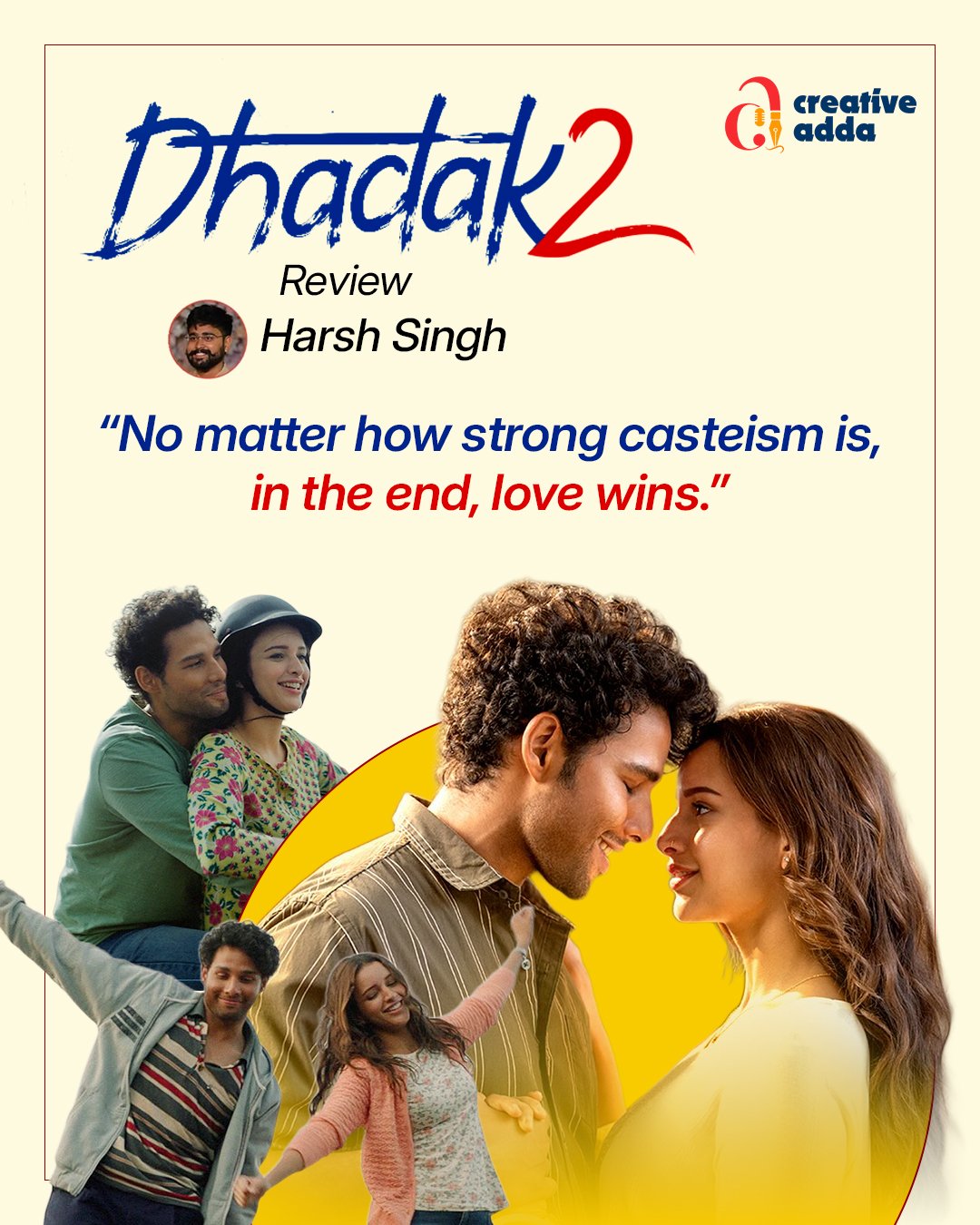 India
India  Mon Dec 2025
Mon Dec 2025
 Harsh Singh
Publish Date:
02 Oct 2025
Harsh Singh
Publish Date:
02 Oct 2025
Dhadak 2 Review: No matter how strong casteism is, in the end, love wins.
Dhadak 2 is a film that powerfully portrays how casteism still poisons society and how love struggles to survive against such barriers.
The Characters Siddhant Chaturvedi plays Neelesh Ahirwar, a boy from a slum area where Scheduled Caste/Tribe families live. Triptii Dimri plays Vidhi, a girl from a well-settled lawyer’s family belonging to the upper caste.Neelesh belongs to a poor family and works part-time as a dhol player at weddings. Vidhi first meets him when she asks for his number to book him for her sister’s marriage. Behind this chance encounter lies Neelesh’s bigger dream he wants to become a lawyer and give his family a better life.
The College Chapter Neelesh applies to a prestigious law college, where the principal (played by Zakir Hussain) also belongs to his caste. Their conversation during the admission interview becomes one of the film’s most impactful moments. By destiny, Vidhi also joins the same college, and they end up as classmates.Here, Neelesh meets Shekhar (Priyank Tiwari), a student activist and research fellow fighting for student rights. Although Shekhar introduces him to activism, Neelesh avoids politics and chooses to focus on his studies.
The Conflict As Neelesh and Vidhi grow closer, upper-caste students and Vidhi’s family begin to oppose their relationship. The biggest threat comes from Shankar (Saurabh Sachdeva), who chillingly believes that killing lower-caste men who dare to love upper-caste women is justified. His performance adds a dark intensity to the film. Adding to Neelesh’s struggle is Vidhi’s cousin (Saad Bilgrami), who repeatedly humiliates him.Meanwhile, Neelesh’s father, Mr. Ahirwar (Vipin Sharma), plays a memorable role as a man who performs launda naach dressing as a woman and dancing before drunken audiences. He does this not only for survival but also because of his deep love for dance.
The Turning Point The film’s most powerful dialogue comes from Principal Zakir Hussain, who tells Neelesh: “If there’s a choice between dying or fighting, always choose to fight.” This line stays with the audience long after the film ends.
The Message Dhadak 2 constantly reminds us how cruel it is that people still believe in casteism, judging others by their work or birth. It also highlights how society often fails to respect love, the purest emotion. Yet, the climax leaves the audience with hope, enthusiasm, and a lasting impression.
Conclusion Despite all the struggles, humiliations, and threats, the film strongly conveys one message: No matter how rough society is, and no matter how deep casteism runs, in the end, love wins.



